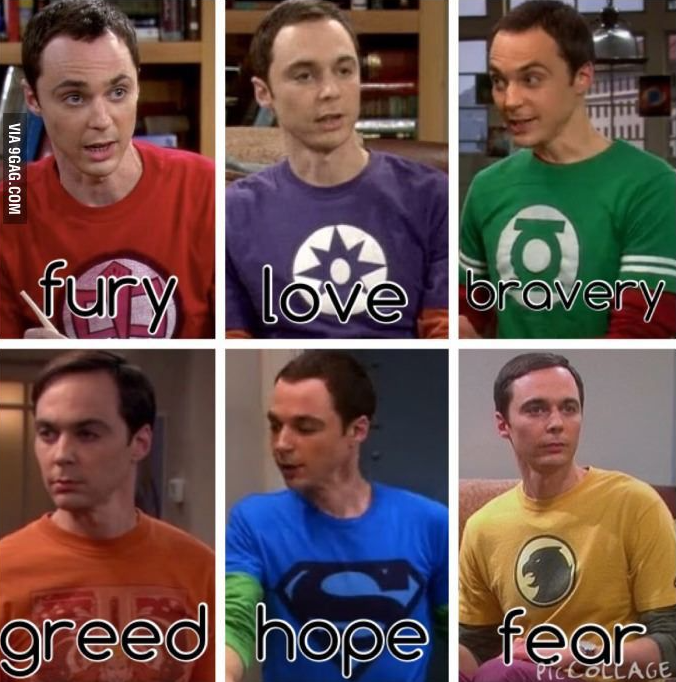
Fans of The Big Bang Theory know Sheldon Cooper for his genius-level IQ, strict routines, and total inability to handle sarcasm.
But there’s one thing even longtime viewers sometimes miss:

The color of Sheldon’s T-shirt is a hidden code — a clue to his emotions.
Yes, really.
His shirts follow the Lantern Corps Emotional Spectrum from DC Comics, and the writers used this color system to hint at what Sheldon was feeling in each scene.
Let’s break down this clever detail.
Red – Anger
When Sheldon shows up in red, trouble is coming.
Red usually means he’s annoyed, offended, or preparing a lengthy lecture no one asked for.
Examples:
-
Someone sits in his spot.
-
Penny changes something in the apartment.
-
Leonard breathes too loudly.
Yellow – Fear
Yellow signals anxiety — and Sheldon feels anxious a lot.
He often wears yellow in episodes involving:
-
New situations
-
Social discomfort
-
Germs
-
Anything unpredictable (so… 90% of his life)
Green – Willpower
Green appears when Sheldon is focused, confident, or committed to a goal.
It’s the shirt he wears when:
-
He’s excited about a breakthrough
-
He’s deep into a scientific project
-
He feels in control (his favorite feeling)
Blue – Hope
Blue is one of Sheldon’s calmest colors.
It shows up during more positive, hopeful moments — when things are going surprisingly well.
For Sheldon, that usually means:
-
A peaceful day
-
A fun science idea
-
Amy not challenging one of his rules too hard
Indigo – Compassion
This one is rare — because compassion is not exactly Sheldon’s natural setting.
Indigo appears when he shows emotional growth or empathy, especially in scenes involving Amy or his friends.
It’s the “softest” Sheldon you’ll get.
Orange – Greed / Wanting Something
Orange means Sheldon is obsessively focused on getting something he wants.
This includes:
-
Winning a competition
-
Claiming ownership
-
Trying to one-up Barry Kripke
-
Being territorial over projects
Black – Sorrow or Negative Emotions
Sheldon rarely wears black, but when he does, it’s a signal of heavier feelings — stress, disappointment, or emotional overload.
Why This Detail Makes the Show Brilliant
The creators didn’t have Sheldon say what he was feeling — because he often can’t.
Instead, they coded it into his wardrobe, turning his T-shirts into emotional subtitles.
It’s subtle.
It’s clever.
And once you notice it, you’ll never watch the show the same way again.
